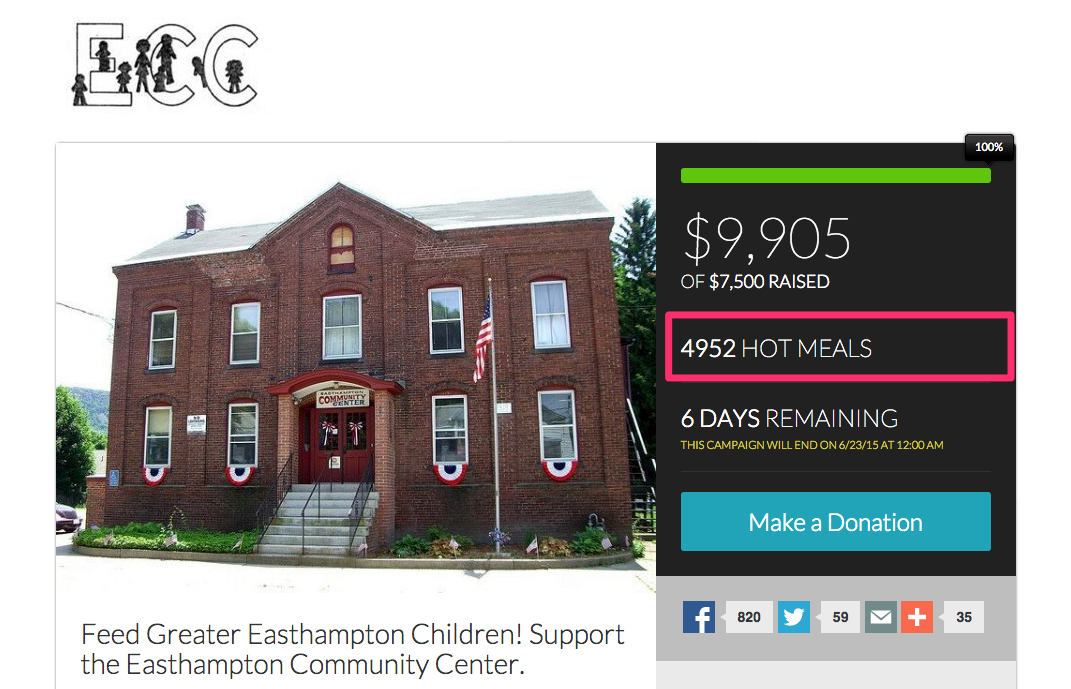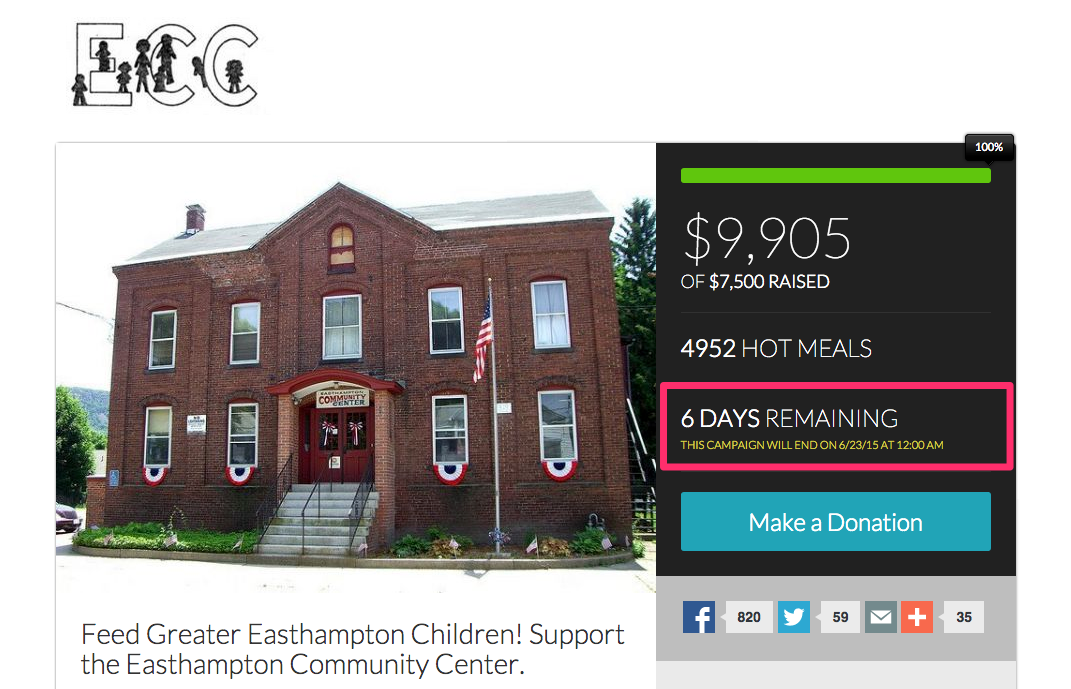A successful fundraising campaign needs to be carefully crafted, and the Fundraising Metrics available to you through your CauseVox campaign site can make a big difference.
Your fundraising page is a place for you to tell your nonprofit’s story, and present your case to encourage your current and potential supporters to take action.
One crucial element of telling your story can be found in the right-hand column: your goal and the real-time progress toward meeting that goal; impact metrics that explicitly describe the value of a dollar within your organization’s work; and an end date or deadline, which creates a sense of urgency for visitors to your page.
Being clear and upfront about your goals and deadlines, and being able to engage your audience throughout the campaign, will make a big impact in the number and total dollar value of donations to your nonprofit. Find out more about how using these fundraising metrics can help your nonprofit campaign reach its full potential.
Fundraising Goal And Progress Bar

The primary metric for an online fundraising campaign is the amount of donations raised.
Your end goal – the total dollar amount you’re working toward for this campaign – is one of the first things people will see when they visit your fundraising page. Having a goal also triggers the audience’s awareness of a need for support, one of the main reasons people give to nonprofits.
That’s why it’s important to keep the SMART principles in mind when setting your goal: your goal should be Specific, Measurable, Attainable, Relevant, and Timely. Use this guide as a step-by-step process for setting fundraising goal.
Your goal spells out exactly what you’re reaching for and helps visitors understand quickly what you hope to accomplish: a specific dollar amount that will help you do specific things.
The Donation Amount Counter, connected to your fundraising goal, is one of a few important visual cues that will help persuade your audience to give. This, along with your Impact Metrics (we’ll get to those a little later) build trust among your audience through transparency.
The progress bar helps you and your supporters track, in real-time, how close you are to reaching your established goal.
This is a crucial visual cue that not only shows in a very simple way how the campaign is going, but also acts as what’s called social proof or modeling: once people see that others have given, it’s more likely they will want to join in, in part because they’ll have more confidence in the nonprofit.
Demonstrating the progress you’re making toward your goal shows donors how they can make a difference, and provides instant gratification when they can see that their unique contribution moves the needle forward.
When you integrate a sense of fun and competition into your campaign – often referred to as gamification – you’ll get more engagement from your supporters, leading to more donations overall.
Impact Metrics

You’re far more likely to receive donations when you can demonstrate the difference someone is making with their gift. Efficacy is another of the top reasons people make charitable donations – the perception that their contribution is meaningful and makes a difference.
Impact metrics are a way for your audience to understand the value of their dollar, and what their money will be used for. Grounded in real life, impact metrics make it easier to tell your brand’s story, using concrete examples people understand, whether that’s books, breakfast, or bottles of clean water.
For many people, your total fundraising goal can feel overwhelming. But $5, $10, or $20 feels less so, and your target audience will feel they can make a real difference without having to fund your entire campaign single-handedly. This reinforces the message that every gift matters.
A study by Root Cause found that as many as 75 percent of donors use information about the impact the nonprofit is making when deciding whether to make a charitable donation. By making this sort of data available on your fundraising page, you’re helping would-be supporters in their search for information about your organization and its impact on the community.
Plus, not only will impact metrics encourage gifts from many would-be donors, but the lack of such details might actually hurt your campaign. A survey of members of the Millennial generation, for example, found 78% are very likely, or somewhat likely, to stop donating if they are not informed about how their donation has made an impact.
Learn more about Impact Metrics on our blog or check out this educational video guide.
End Date

The Days Remaining Counter displays the countdown to your fundraising end date. Choosing a deadline, and keeping your campaign short, creates a sense of urgency among your audience.
A review of thousands of Kickstarter campaigns shows a compressed timeline isn’t necessarily the only factor to a successful campaign, but can be an important key to success. A shorter duration gives the project more momentum from start to finish, keeping your supporters more excited about what’s happening, and reducing the slowdown that inevitably occurs in the middle of most campaigns.
Marketing and psychology research also shows urgency is a powerful influence on our behavior, and an urgent situation – in this case, the end date of your campaign – can cause people to act more quickly.
It’s also shown deadlines improve fundraising results, whether or not they have real-world importance (such as an urgent need for the people you serve). But an end date that does have significance can increase the sense of purpose for the campaign and for your potential donors.
Try choosing an awareness day that relates to your cause, or an approaching external deadline that puts services at risk. Renewal Farm in Upstate New York, for example, set their campaign’s end date to coincide with cuts to federal funding that put their substance abuse treatment program at risk.
Review our guide to the eight elements on how you can create a high-performing online fundraising site.
Bonus Tip
The information you gather for your fundraising page can also make for great content in related communications about your campaign. You can include impact metrics in your emails, for example, or use the progress bar to make timely updates on Twitter.
In addition to developing compelling content for your fundraising page, we recommend you take the time to establish meaningful goals, and enable all three metrics when you set up your campaign. Engaging your supporters by sharing your goals, your deadlines, and the impact of their gift will increase the odds of a successful campaign.




